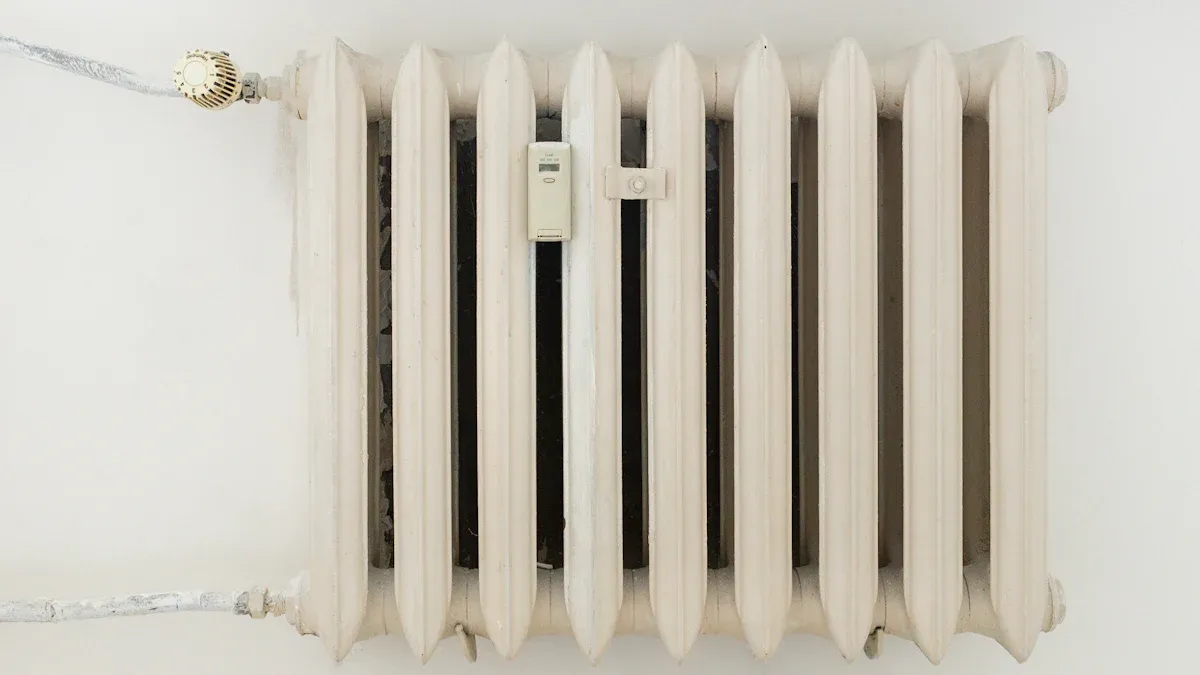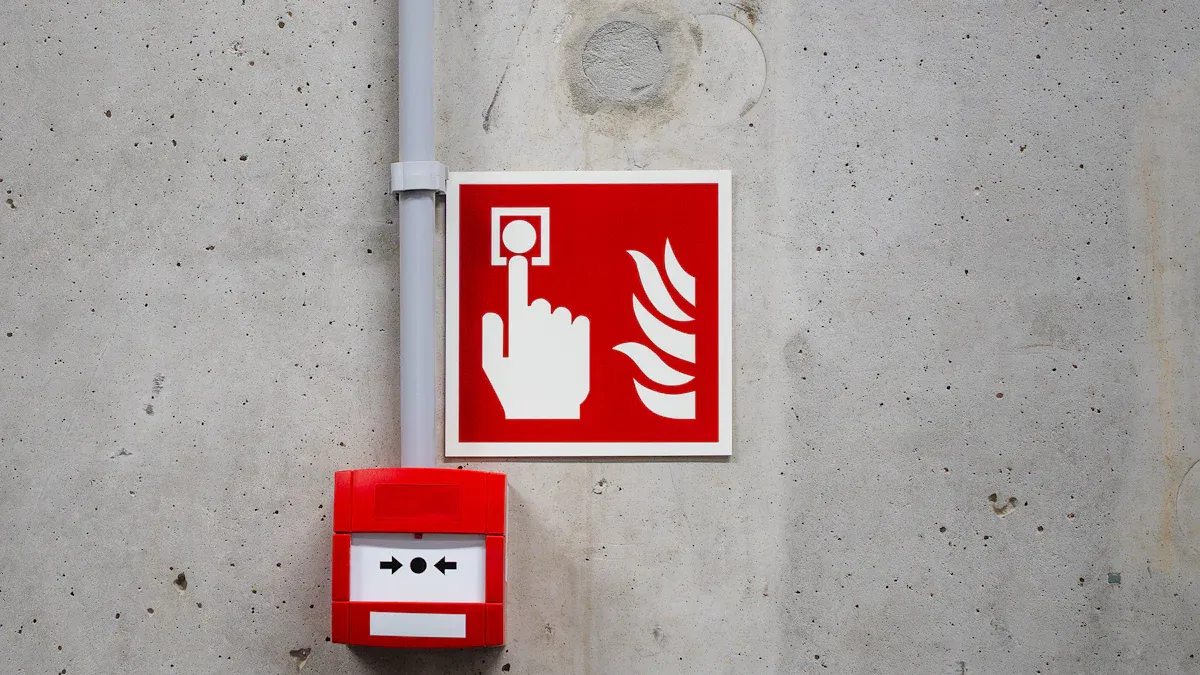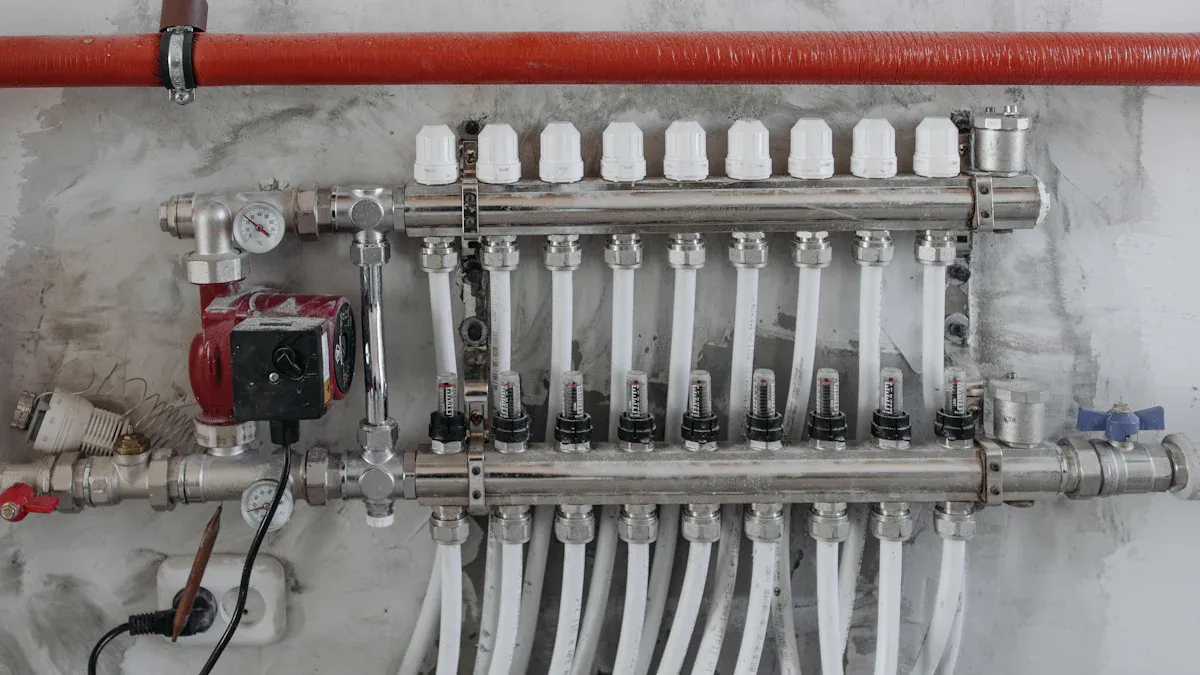
Electric electric heaters play a crucial role in maintaining comfortable indoor temperatures, especially during colder months. Proper maintenance of the electric heater element ensures these devices operate efficiently and safely while helping households save money. For example, the average U.S. household spends around $2,000 annually on energy. By using energy-efficient appliances, families can save hundreds of dollars each year. Replacing older units with updated models can further reduce costs by up to $450 annually. Neglecting an electric heat element heater or failing to clean the electric heating element can lead to inefficiency, higher bills, and potential safety hazards.
Taking care of your electronic heater doesn’t just extend its lifespan—it also reduces energy burdens and improves overall comfort. Whether it’s a small electric heat element heater or a larger unit, consistent upkeep is key to getting the most out of your investment.
Key Takeaways
- Clean your electric heater often to make it work better. Dust can cause it to overheat and raise energy costs.
- Adjust your thermostat to use less energy. Lower the heat when you’re not home to save money.
- Keep space around your heater clear for good airflow. This stops overheating and keeps the air inside fresh.
- Plug your heater into a surge protector to avoid damage. This easy step can save money on repairs and make it last longer.
- Get your heater checked by a professional once a year. They can find problems early and help it work better.
Regular Maintenance for Your Electric Heater

Regular maintenance is essential to keep your electric electric heater running efficiently and safely. Neglecting upkeep can lead to higher energy bills, reduced performance, and potential safety hazards. Here are three key maintenance tasks to ensure your heater stays in top condition.
Dust and Debris Removal
Dust and debris can accumulate on your electric electric heater over time, reducing its efficiency and potentially causing overheating. Regular cleaning prevents these issues and ensures smooth operation. Follow these steps to remove dust and debris effectively:
- Turn off and unplug the heater before cleaning.
- Use a soft, dry cloth or a vacuum cleaner with a brush attachment to remove dust from the exterior and vents.
- For hard-to-reach areas, use compressed air to blow out debris gently.
Tip: Cleaning your heater every few weeks during the heating season can improve its performance and extend its lifespan.
Cleaning Heating Elements
The heating elements are the core components of your electric electric heater. Dirt and grime buildup on these elements can reduce heat output and increase energy consumption. Cleaning them regularly ensures optimal performance. Here’s how to do it:
- Turn off and unplug the heater, allowing it to cool completely.
- Open the heater’s casing according to the manufacturer’s instructions.
- Use a soft brush or cloth to clean the heating elements carefully. Avoid using water or harsh chemicals.
- Reassemble the heater and test it to ensure proper functionality.
Note: If you’re unsure about cleaning the heating elements yourself, consult a professional technician for assistance.
Replacing Filters
Filters play a crucial role in maintaining air quality and ensuring the efficient operation of your heater. Dirty or clogged filters can restrict airflow, forcing the heater to work harder and consume more energy. Replacing filters regularly offers several benefits:
- Improved system performance and efficiency.
- Enhanced indoor air quality by reducing dust and allergens.
- Lower energy consumption and operational costs.
Most manufacturers recommend checking and replacing filters every 1-3 months, depending on usage. Always refer to the user manual for specific guidelines.
Did you know? Clean filters can significantly improve the performance of HVAC systems, leading to reduced energy consumption and better air quality.
Smart Usage Practices for Electric Heaters
Avoid Overworking the Heater
Overworking an electric heater can lead to malfunctions and safety risks. Prolonged use without breaks increases the chances of overheating, which may damage internal components or even cause fires. To prevent this, users should adopt safe practices:
- Turn off and unplug the heater every few hours to allow it to cool down.
- Avoid leaving the heater running when no one is present.
- Use the heater only when necessary, rather than as a primary heat source for extended periods.
Tip: Setting a timer can help ensure the heater operates only for a limited duration, reducing the risk of overuse.
By following these steps, households can protect their electric heaters and maintain a safer environment.
Optimize Thermostat Settings
Optimizing thermostat settings not only improves energy efficiency but also reduces heating costs. Studies show that adjusting the thermostat strategically can lead to significant energy savings. Consider these tips:
- Lower the temperature during sleep or when the house is unoccupied.
- Invest in a smart thermostat that learns usage patterns and adjusts settings automatically.
- Use the ‘Away’ mode to minimize energy consumption when no one is home.
Smart thermostats also provide real-time energy insights, empowering users to make informed decisions. For example, adaptive setpoint temperatures can save over 40% on energy costs, according to research.
| Thermostat Setting Change | Energy Savings (%) | Study Reference |
|---|---|---|
| Cooling setpoint from 22.2 °C to 25 °C | 29% cooling energy | Hoyt et al. |
| Setpoint from 21.1 °C to 20 °C | 34% terminal heating energy | Hoyt et al. |
| Occupancy-driven thermostat control | 11% to 34% | Wang et al. |
Did you know? Using a programmable thermostat can reduce heating and cooling costs by up to 10% annually.
Ensure Proper Ventilation
Proper ventilation around an electric heater is essential for safety and efficiency. Good airflow prevents overheating and ensures the heater operates effectively. Ventilation also helps maintain a healthy indoor environment by reducing air contaminants and controlling humidity.
- Keep the area around the heater clear of obstructions to allow air to circulate freely.
- Maintain humidity levels between 40% and 60% to prevent mold and bacteria growth.
- Ensure windows and vents are functioning properly to expel excess CO2 and maintain fresh air.
Note: Poor ventilation can lead to overheating, which may shorten the lifespan of the heater or pose safety hazards.
By ensuring proper ventilation, users can enhance the performance of their electric heaters while creating a safer and more comfortable living space.
Safety Tips for Electric Heater Protection

Electric heaters provide warmth and comfort, but safety precautions are essential to prevent accidents and ensure long-term functionality. Following these tips can help protect your electric heater and create a safer environment.
Prevent Electrical Circuit Overload
Overloading electrical circuits can damage your electric heater and pose serious safety risks. Electric heaters draw significant power, which can strain circuits if multiple high-energy devices operate simultaneously. To prevent overload:
- Use a dedicated outlet for the heater whenever possible.
- Avoid plugging the heater into extension cords or power strips, as they may not handle the high wattage.
- Check the circuit’s capacity and ensure it matches the heater’s power requirements.
Tip: If the circuit frequently trips, consult an electrician to assess the wiring and capacity.
Proper circuit management reduces the risk of electrical fires and ensures the heater operates efficiently.
Keep Flammable Items Away
Keeping flammable items away from electric heaters is crucial for fire prevention. Portable heaters should maintain a safe distance from combustible materials such as curtains, furniture, and paper. The 2010 Fire Code of New York State recommends placing heaters at least three feet away from these items. This guideline significantly reduces the risk of fire incidents.
- Position the heater in an open area with no nearby obstructions.
- Avoid using heaters in spaces with excessive clutter or flammable liquids.
- Regularly inspect the surroundings to ensure compliance with safety distances.
Did you know? Following the three-foot rule can prevent many fire hazards associated with electric heaters.
By adhering to this safety measure, households can enjoy warmth without compromising safety.
Inspect Power Cords and Plugs
Damaged power cords and plugs can lead to electrical shocks or fires. Regular inspections help identify wear and tear before they become hazardous. To ensure safe operation:
- Examine the cord for cracks, fraying, or exposed wires.
- Check the plug for discoloration or bent prongs.
- Replace damaged cords or plugs immediately with manufacturer-approved components.
Alert: Never use an electric heater with a damaged cord or plug. Doing so increases the risk of electrical accidents.
Routine inspections keep the heater functioning safely and extend its lifespan.
Long-Term Care for Electric Heaters
Schedule Professional Inspections
Scheduling regular professional inspections is a proactive way to maintain the safety and efficiency of your electric electric heater. Experts recommend these inspections to identify potential hazards before they escalate into serious problems. Professionals can detect issues such as frayed wiring, overloaded circuits, or outdated electrical panels.
- Inspections ensure that your heater complies with current safety codes.
- They help prevent electrical hazards like overheating wires or damaged breakers.
- Professionals can identify the need for upgrades to meet modern electrical demands.
Routine inspections also improve energy efficiency. By addressing faulty wiring or outdated systems, homeowners can reduce energy consumption and lower utility bills. Additionally, inspections ensure that smoke and carbon monoxide detectors are functional, enhancing household safety.
Tip: Schedule an inspection at least once a year, especially before the heating season begins.
Proper Off-Season Storage
Storing your electric heater properly during the off-season can significantly improve its performance in the following winter. Research shows that maintaining heat storage systems during non-heating periods enhances their efficiency.
| Findings | Description |
|---|---|
| Heat Transfer Model | A model for mid-deep borehole heat exchangers (MBHE) analyzed heat storage. |
| Improved Heat Extraction | Injecting heat during non-heating periods improved heat extraction capacity. |
To store your heater effectively:
- Clean the heater thoroughly to remove dust and debris.
- Wrap the unit in a protective cover to prevent moisture and dirt buildup.
- Store it in a cool, dry place away from direct sunlight or extreme temperatures.
Proper storage not only extends the heater’s lifespan but also ensures it operates efficiently when needed again.
Use a Surge Protector
Using a surge protector is an essential step in protecting your electric heater from power surges. Voltage spikes, which often exceed the standard household voltage of 120 volts, can damage internal components. Surge protectors act as a barrier, preventing these surges from reaching your heater.
- They safeguard expensive appliances, reducing the risk of costly replacements.
- Surge protectors mitigate the impact of internal voltage spikes, which are common in electric heaters.
Investing in a high-quality surge protector ensures that your heater remains safe from electrical damage. This small addition can save significant repair costs and extend the life of your appliance.
Energy Efficiency Strategies for Electric Heaters
Seal Drafts and Insulate Your Space
Sealing drafts and insulating your home can significantly improve the efficiency of an electric electric heater. Drafts allow cold air to enter and warm air to escape, forcing heaters to work harder. Insulation prevents heat loss, keeping rooms warmer for longer periods. Homeowners can take simple steps to address these issues:
- Use weatherstripping around doors and windows to block drafts.
- Apply caulk to seal gaps in walls or around window frames.
- Install insulation in attics, basements, and walls to reduce heat transfer.
The residential sector accounts for 21% of total energy consumption in the U.S., with heating and cooling making up 55% of this usage. By sealing drafts and insulating spaces, households can lower energy consumption and reduce heating costs.
Tip: Conduct a home energy audit to identify areas where heat escapes and prioritize insulation improvements.
Use a Programmable Thermostat
A programmable thermostat offers an effective way to optimize energy use and reduce costs. These devices allow homeowners to schedule temperature adjustments based on daily routines. For example, lowering the temperature by 7-10°F for 8 hours a day can save up to 10% annually on heating and cooling expenses.
Key features of programmable thermostats include:
- Automated temperature changes during nighttime or when the house is unoccupied.
- Away settings to minimize energy waste while residents are out.
- Real-time energy usage insights to help users make informed decisions.
By adopting these strategies, households can reduce energy waste and improve the efficiency of their heating systems.
Did you know? Programmable thermostats not only save money but also enhance comfort by maintaining consistent indoor temperatures.
Turn Off the Heater When Not in Use
Turning off the heater when it is not needed is one of the simplest ways to conserve energy. Many people leave heaters running even when rooms are unoccupied, leading to unnecessary energy consumption. Instead, users should adopt mindful practices:
- Switch off the heater before leaving the house or going to bed.
- Use timers to ensure heaters operate only during specific hours.
- Rely on blankets or warm clothing to stay comfortable without constant heating.
In 2015, the average U.S. household consumed 77 million British thermal units (Btu) of energy, with heating accounting for a significant portion. Behavioral strategies, such as turning off heaters when not in use, can help reduce this consumption and promote energy efficiency.
Alert: Leaving heaters on unattended increases the risk of overheating and potential safety hazards.
Regular maintenance, smart usage, and energy efficiency strategies are essential for protecting an electric electric heater. These practices not only reduce energy bills but also enhance convenience and extend the lifespan of the device. For instance, studies show that advanced control systems, such as Artificial Neural Networks, can improve energy efficiency by over 70%, ensuring better comfort and sustainability. By adopting these measures, households can enjoy a safer, more cost-effective heating experience while contributing to environmental conservation.
Tip: Consistent care and mindful usage can transform your heater into a long-term, reliable companion for cold seasons.
FAQ
What is the ideal location to place an electric heater?
Place the heater on a flat, stable surface in an open area. Keep it at least three feet away from flammable objects like curtains or furniture. Avoid placing it in high-traffic areas to prevent accidental tipping.
Tip: Position the heater near an interior wall for better heat distribution.
How often should I clean my electric heater?
Clean the heater every two to four weeks during regular use. Dust and debris can accumulate quickly, reducing efficiency and increasing safety risks. Regular cleaning ensures optimal performance and extends the heater’s lifespan.
Alert: Always unplug the heater before cleaning to avoid electrical hazards.
Can I leave my electric heater running overnight?
It is not recommended to leave an electric heater running overnight. Prolonged use increases the risk of overheating or fire. Instead, use a programmable timer to turn it off automatically after a set duration.
Did you know? Using blankets or warm clothing can reduce the need for overnight heating.
What should I do if my heater trips the circuit breaker?
If the circuit breaker trips, unplug the heater immediately. Check if the circuit is overloaded with other devices. Use a dedicated outlet for the heater and consult an electrician if the issue persists.
Note: Frequent tripping may indicate a wiring problem that needs professional attention.
Are surge protectors necessary for electric heaters?
Yes, surge protectors shield heaters from voltage spikes that can damage internal components. They are especially useful in areas prone to power fluctuations. Choose a high-quality surge protector designed for high-wattage appliances.
Emoji Reminder: ⚡ Protect your heater and your wallet with a reliable surge protector!
Post time: Jun-09-2025




